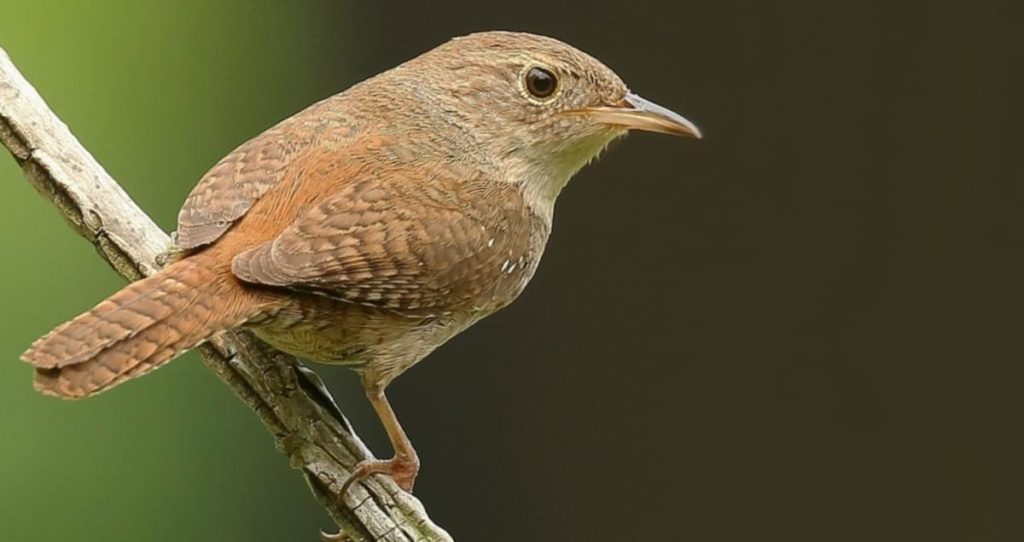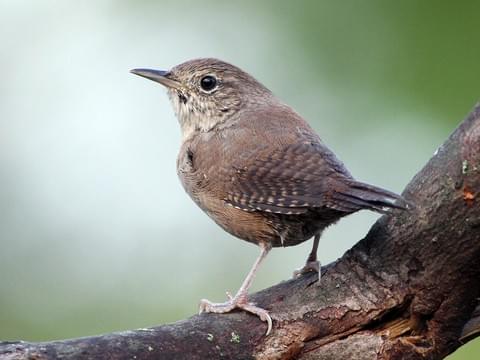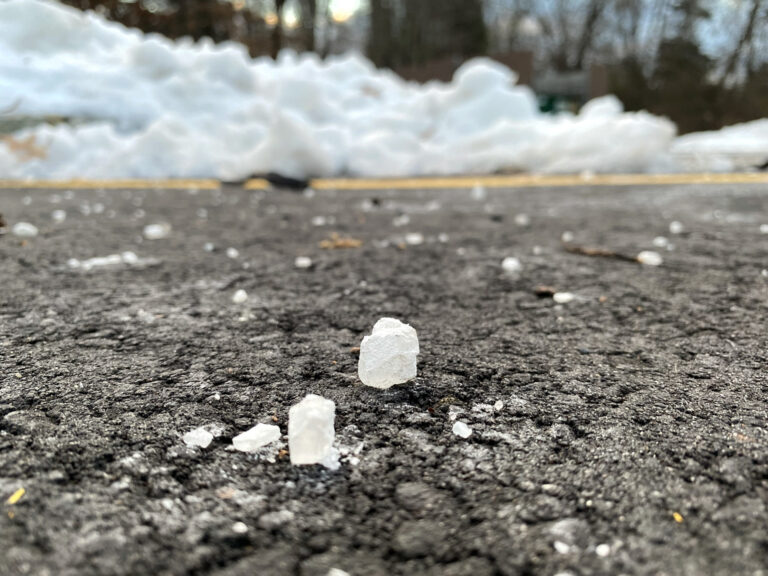 House wrens are small, warm brown birds that are often spotted in yards, thickets near woods, gardens, yards, and parks. These merry songbirds like brush piles for cover, protection, and as a source for insects.
House wrens are small, warm brown birds that are often spotted in yards, thickets near woods, gardens, yards, and parks. These merry songbirds like brush piles for cover, protection, and as a source for insects.
Watch Our Live Bird Box Cam!
With tiny white and black spots mottling their earthy plumage, the males and females look alike. House wrens cock their tails at a jaunty angle when they perch on a branch and have curved bills that are well suited to catching and eating their insect prey.
House wrens display a variety of nesting behaviors, often choosing natural tree cavities, woodpecker holes, or bird boxes. The males are fiercely competitive and will fill many cavities with sticks. He builds these “dummy” nests in an attempt to exclude other birds, distract predators and to court a female. The female selects one of these as a home, adding materials like grass and hair to make it softer. She lays six-to-eight eggs and incubates them for 12-to-14 days. Fledglings leave the nests two or more weeks after hatching.
The Cornell Laboratory of Ornithology states that as the season progresses, their nests can become infested with mites and other parasites that feed on the wren nestlings. Perhaps to fight this problem, wrens often add spider egg sacs into the materials they build their nests from. In lab studies, once the spiders hatched, they helped the wrens by devouring the nest parasites. The tiny house wrens, which weigh as much as about two quarters, fiercely compete for nesting areas, ousting bluebirds, tree swallows, chickadees, and others in a dramatic fashion for a nest it prefers.
The humble house wren has one of the largest songbird ranges – found from Canada to Central America, the West Indies to South America, according to All About Birds.
Try your hand at building a bird box and learn how by watching this video!




